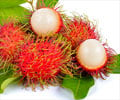Is it possible to smell anger? Well, if you are a fruit fly, yes is the answer, says a new study conducted over them.
Researchers from the California Institute of Technology (Caltech) showed that a whiff of a rage-inducing pheromone can turn otherwise peaceful fruit flies into aggressors."Not only did we identify the pheromone that leads to aggression and its neuron, but we were able to manipulate the ability of the flies to increase aggression," Discovery News quoted David Anderson, a scientist at Cal Tech and co-author of the study as saying.
During the study, researchers dropped filter paper soaked in artificially produced pheromone, known as 11-cis-vaccenylacetate (CVA), into the air around six flies.
They found that flies quickly turned violent against their opponents, rearing up on their hind legs and snapping down, and grappling with their forelegs.
Natural CVA is found in the hard exoskeletons of flies and theoretically released when the flies bump against each other.
This also enrages flies.
Advertisement
The CVA rose through the container and out of the holes on top, where two other flies were waiting.
Advertisement
However, humans that smell CVA don't fly into a rage.
"This evolved as a private means of communications between fruit flies," said Anderson.
"Aggression pheromones are used not only insects but in mammals as well. But whether we use aggression-promoting pheromones is speculation," he added.
"This is the most direct link between pheromone and anger," said Leslie Vosshall, a scientist at Rockefeller University in New York. Vosshall agrees that there could be such a chemical.
"Most of what turns out to be true in animals turns out to be true in humans as well," Vosshall added.
The study appears in journal Nature.
Source-ANI
TRI















